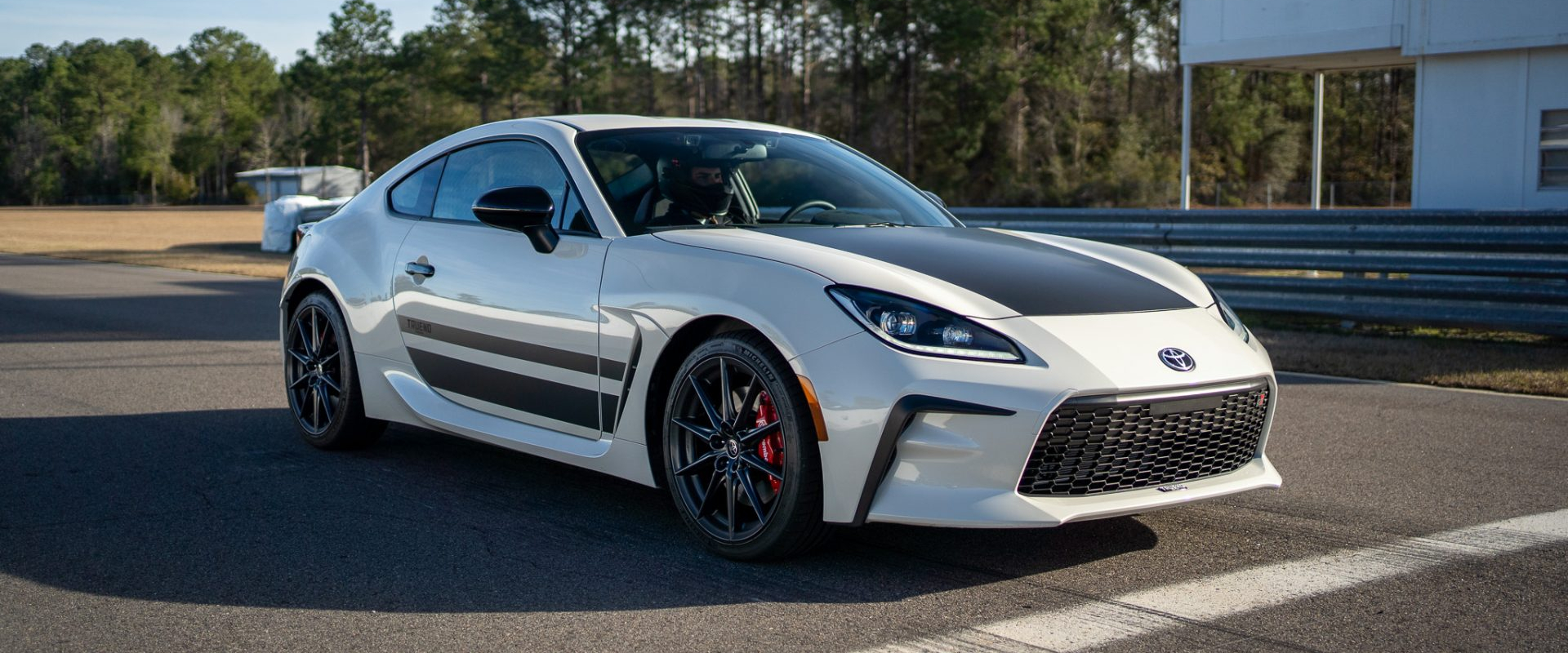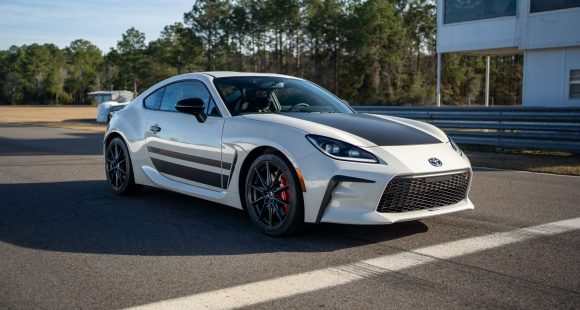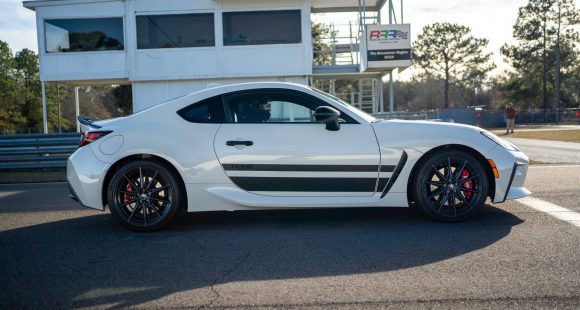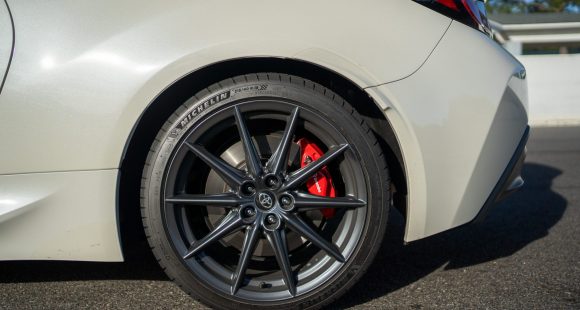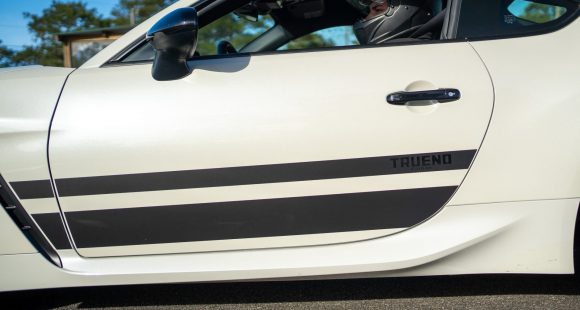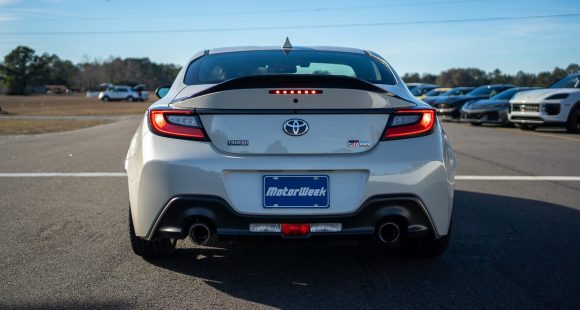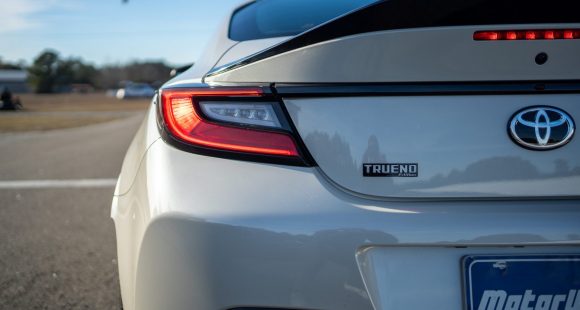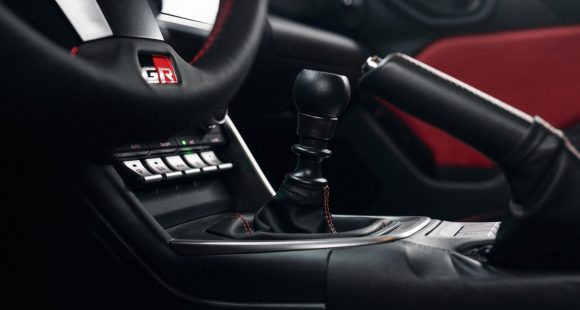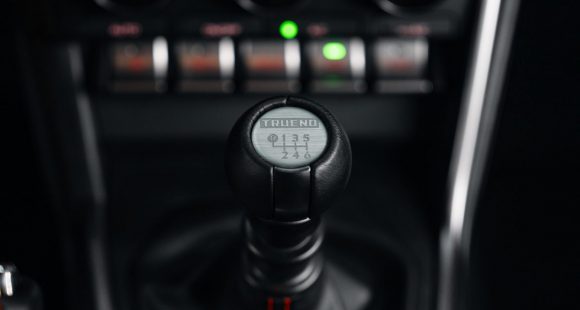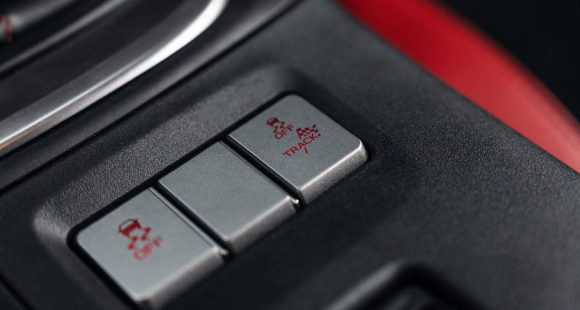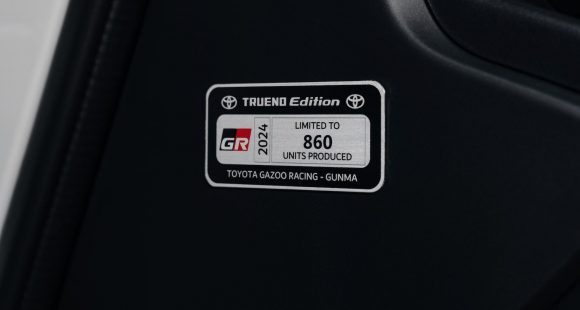2019 Jeep Cherokee
To say that the styling of the reborn 2014 Jeep Cherokee was polarizing is an understatement. Well for 20-19 Jeep has tried to bring the “love it” and “hate it” folks a little closer together, although technically, the latest Cherokee is just a mid-cycle refresher. Still, there’s much more going on than just a styling mea culpa.
As is often the case, while many reviewers and bloggers gave the car-based squint-eyed Jeep Cherokee a hard time, it has actually done very well for the brand. Even outlasting the Dodge Dart that it was based on, and more importantly bringing many new people into the brand as first-time Jeep owners. The 2019 edition looks to broaden that appeal even more, while also attempting to more endear itself to the Jeep faithful.
While there already was a choice when it came to the engine, either a 2.4-liter I4 or a 3.2-liter V6; Jeep has added another option into the mix, a 2.0-liter turbo that outputs 270-horsepower, just one less than the V6, and 295 lb-ft. of torque, 56 more than the 6.
 But even with that extra torque, it’s still the V6 that rates the highest towing capacity, at 4,500-lbs; very good for the segment. The 2.0-liter however, does feel incredibly powerful for a vehicle of this size, and indeed it has 80 more horsepower than you can get in a Honda CR-V.
But even with that extra torque, it’s still the V6 that rates the highest towing capacity, at 4,500-lbs; very good for the segment. The 2.0-liter however, does feel incredibly powerful for a vehicle of this size, and indeed it has 80 more horsepower than you can get in a Honda CR-V.
Like the rest of the engines, it works with a 9-speed automatic. But, unlike in earlier versions of Cherokee, the 9- speed is much smoother and more determined in shift points. It makes this Cherokee drive almost like a totally different vehicle.
And no other cute ute in its price class can hang with Cherokee when the pavement ends. There are even 3-different Active Drive 4X4 systems to choose from. Now, some may question the need for all of that, since most Cherokees will never set rubber on anything but asphalt; but it’s a Jeep thing, and Jeep wants to make sure that is indeed still a thing. Opt for the Trailhawk, and its 1-inch of lift, if that is truly your thing as well.
Chief among the updated styling elements is a new front end that falls more in line with Jeep’s upright and conservative past. A new hood as well; and of course updated lighting. There are also some new wheel options, and even better, a lighter liftgate with hands free operation.
 The cargo area has been reconfigured a bit. Space is up to 27.6 cubic-ft. from 24.6; max capacity with seatbacks folded stays about the same, at 54.7.
The cargo area has been reconfigured a bit. Space is up to 27.6 cubic-ft. from 24.6; max capacity with seatbacks folded stays about the same, at 54.7.
There’s some upgraded interior trim up front; as well as some new color choices, and the latest version of UConnect.
As for what the new 2.0-liter adds to your get-up-and-go, well it gets to 60 in 6.7-seconds. Not screaming fast, but quick for a utility; and about ½ a second quicker than what you’d expect to get from the V6.
Good snap off the line, great traction, and spirited punch from the boosted 4-banger, which likes to rev up quickly. It sounds eager and sporty as well, while the 9-speed clicks through gears comfortably but directly. The ¼-mile ends in 15.2-seconds at 90 miles-per-hour.
No major changes to the suspension, but we had high hopes that a little less engine weight over the front wheels, would work some magic on the handling side.
 Well, no magic; steering is still slow and understeer present. But, grip is very solid and body sway minimal for its class.
Well, no magic; steering is still slow and understeer present. But, grip is very solid and body sway minimal for its class.
Government Fuel Economy Ratings for the 2.0-liter with four-wheel-drive are 21-City, 29-Highway, and 24-Combined; though Premium is recommended. That makes for an average Energy Impact Score; using 13.7-barrels of oil yearly, with C02 emissions of 6.1-tons.
Pricing starts at $26,935 for front-wheel-drive, which is a considerable step up from our ‘14’s base price of around $24,000; though that entry level Sport model is no more; leaving the much better equipped Latitude as the new base model. All-wheel-drive adds another $1,500, and things top out with Overland trim at $37,470.
Old style, new style, doesn’t really matter; the 2019 Jeep Cherokee is a wildly popular utility that seems to be attracting both compact as well as midsize buyers due to all of its capabilities. The skin may now be a bit less controversial, but the Cherokee is one adventure vehicle that harkens back to what SUVs were all about from the beginning; go anywhere vehicles that you can live with day in and day out.
Specifications
- Engine: 2.0 liter
- Horsepower: 270
- Torque: 295 lb-ft.
- 0-60 mph: 6.7 seconds
- 1/4 mile: 15.2 seconds @ 90 mph
- EPA: 21 mpg city / 29 mpg highway
- Energy Impact: 13.7 barrels of oil/yr
- CO2 Emissions: 6.1 tons/yr
2024 Polestar 2
More Range And More Power For The Polestar 2
Volvo is well on their way to making the transition to an all-electric brand, but their sister-brand Polestar is already there. Now, we’ve spent lots of time in their all-wheel drive, five-door Polestar 2, having tested it in 2021, and a year later when a two-wheel drive version arrived. But, EV updates are coming quickly. So, let us be your guide for all that’s new with the Polestar 2.
While we are driving more EVs than ever, we’ve also been spending a lot of time recently circling back to ones we’ve previously tested. As in this new era of electrified vehicles, significant updates are arriving quickly, with R&D investments increasing and retrofitting them easier than ever. This is often done through software updates that can even be accomplished over the air. For 2024, the Polestar 2 has indeed gotten some software updates, but some physical ones as well.
Clearly aimed directly at Tesla’s Model 3 when it arrived; the Polestar 2’s build quality was vastly better, but range definitely came up short. So, addressing that was priority No. 1; and for ’24 the Polestar can travel up to 20% farther than before while consuming 9% less energy, and when it comes time to charge it back up, it can do that 34% faster too.
Range in the Single Motor version increases from a max of 270 to 320 miles thanks to a larger 82-kWh battery pack, and that solitary motor now powers the rear wheels, not the front wheels. It’s also bigger, coming in at 220 kW compared to the previous 170 kW front-wheel drive version, going from 231 to 299 horsepower.
Dual Motors keep the same 78-kWh battery, but still sees a boost from 260 to 276 miles and takes advantage of the larger rear motor for a new combined 310-kW output with 421 horsepower. Our test car has the added Performance Pack, which uses an additional 35 kW to deliver 455 horsepower and 546 lb-ft of torque, though max range drops to just 247 miles.
The new battery in rear-drive 2s will also charge faster, now accepting up to 205 kW for an 80% charge in 20 minutes; max for dual-motors stays at 155 kW, which puts an 80% charge at 34 minutes. Using 32 kWh of electricity per 100 miles, the Dual Motor earns a good efficiency rating.
The [Polestar] 2 has always been one of the most enjoyable EVs to drive, even more so now with that additional power coming from the rear motor.
Unfortunately, extremely cold temperatures kept us from seeing that increased range, as we were only on pace for about 194 miles in our test.
The 2 has always been one of the most enjoyable EVs to drive, even more so now with that additional power coming from the rear motor. And especially when equipped with the Performance Pack as it not only includes more power, but adds 20-inch forged wheels, upgraded brakes, and adjustable Ohlins Dual Flow Valve performance dampers. It greatly improves handling prowess without affecting ride quality, and is easily worth the $5,500 charge if you at all enjoy driving.
Even on a 20-degree track day there was plenty of grip through our handling course. No understeer or oversteer, and lots of feedback through the wheel. There was a nice, strong launch off the line that properly planted us firmly in the seat, and rocketed us to 60 in 4.5 seconds. Power delivery stayed pretty intense up until about 80 mph when there was a definite tapering off. Still, it was a 13.4-second quarter-mile at 102 mph; smooth, quiet, and stable the whole way.
When this car debuted, its Google-based infotainment setup was a novelty, but since then, more and more manufacturers are just “Googling it” so it doesn’t seem out of place at all. The wireless phone charger is easy to access, and there’s a great Harmon/Kardon sound system and panoramic sunroof to enhance the in-cabin experience. Exteriors have also been enhanced with a smooth grille insert and new wheel choices.
Hatchback practicality means 14.3 cu-ft of easy to access cargo space with split-folding seatbacks for longer items and expanding the space to 38.7 cu-ft. Plus, there’s even a sizeable storage bin up front under the hood.
Single Motor Polestar 2 pricing now starts at $51,300, with Dual Motors starting at $56,700; topping out at $64,400.
For a car manufacturer that hasn’t even been around for a decade yet, Polestar has kept itself busy, totally transforming their latest model in just a few years, making the 2024 Polestar 2 even more appealing. They are certainly off to a good start, and with a host of Polestars just over the horizon, including some all-important utility vehicles, this star will be shining even brighter.
Specifications
As Tested
- Motor Setup: Dual Motor
- Horsepower: 455
- 0-60 mph: 4.5 seconds
- EPA Range: 247 miles
- Efficiency : 32 kWh / 100 miles
- Battery Size: 78-kWh
- Torque: 546 lb-ft
- 1/4 Mile: 13.4 seconds at 102 mph
- MW Test Loop: ~ 194 miles
- Peak Charging Rate: 155 kW
2024 Toyota GR 86 TRUENO Edition
Paying Tribute to Eight-Six History
The Toyota GR86 may not be the fastest, flashiest or most expensive sport coupe around; but it’s for those very reasons that we consider it near-perfect for folks like us that just want to get out there and drive! For 2024, Toyota is giving us even more to love while also celebrating the origins of the legendary “eighty-six,” with this TRUENO edition.
When the “Gazoo Racing” team got ahold of Toyota’s 86 nameplate to make the GR86 for 2022, we didn’t think it could get any better. Now just two years deep, it turns out it can thanks to a few performance add-ons, and this 2024 Toyota GR86 TRUENO Edition has them all.
It’s okay if you don’t know the original AE86 Sprinter TRUENO this car refers to. For now, just know that the modern rendition celebrates that classic by carrying the same ethos of low-power, rear-wheel drive fun. In lieu of a downhill mountain pass, three days at Savannah’s Roebling Road Raceway sufficed as our playground.
2024 also sees the introduction of the GR86 Performance Package, available on all models and standard on the TRUENO. This $1,500 kit mounts Brembo brakes and SACHS dampers onto Premium grades; and throws in larger 18-inch wheels to Base GR86s to accommodate said brakes, upping package price to about two-grand.
Sure, no extra power; but we felt as fast as ever through Roebling’s nine corners.
The GR86 was already such a fun car to toss around, and these enhancements make it all the better.
The Brembos in particular are something else. Being so lightweight, late braking the 86 has always been easy, and these four-piston fronts and two-piston rears let our foot procrastinate even longer. Diving into corners, turn-ins are crisp with practically zero body roll.
But sometimes you just have to cut a little loose. Put on the throttle at just the right moment and the skinny 215-wide tires give way to steady slides; but they are Michelin Pilot Sport 4s, so there’s plenty of grip when needed.
[This] modern rendition celebrates that [AE86] by carrying the same ethos of low-power, rear-wheel drive fun.
Now, if you were enthralled by our Roebling Track Test of the GR86 two years ago and already went out and bought one, get this: these performance upgrades can be retrofitted on any 2022-and-up GR86 sporting 18-inch wheels.
It is a bit of déjà vu under the hood, seeing the same 2.4-liter 4-cylinder BOXER putting out 228 horsepower and 184 lb-ft of torque. That’s not a lot when stacked up to some other Japanese sports cars, but plenty for a sub-3,000-pound coupe. It’s sent to the rear wheels through a standard Torsen limited-slip diff and a six-speed manual with satisfying throws; though a six-speed automatic is available should you desire.
Our manual tester hit 60 in 5.9 seconds, almost a half second quicker than the automatic model we tested two years prior. The quarter-mile ended in 14.4 seconds at 99 mph, also a tad swifter.
Once we apexed turn nine and hit the front straight, we saw 131 mph before employing those Brembos. No doubt, this GR86 is far more potent than any stock 86 from before.
If you Google the Toyota AE86, you’ll no doubt find the boxy mid-80s hatch wearing a similar white and black “Panda” paint scheme, which this GR86 mirrors quite well; though, red is available too. Either color is contrasted by various black accents: glossy mirrors, door handles and a rear spoiler, joined by side graphics and a wrapped hood. You’ll see “TRUENO” badging adorning the lower front bumper and the rear deck, and the namesake subdued in each side graphic.
Inside, the cabin sports red-trimmed Ultrasuede seats, complimented by red stitching on the wheel and shift boot; and the knob itself gets a special TRUENO-logoed cap.
Plenty of physical controls for HVAC and the sorts, and the screen space respectfully limited to a 7-inch digital gauge cluster and an 8-inch infotainment touchscreen; and smartphone integration makes it easy to queue up your favorite Eurobeat playlist. 2024 does sees more tech for manual models, now including Toyota’s Active Safety Suite with pre-collision braking, adaptive cruise control and more.
Government fuel economy ratings for the GR86 with the manual are 20 city, 27 highway and 22 combined on regular.
Pricing for the 2024 Toyota GR86 starts at $30,395 with delivery. TRUENO pricing starts at $35,815— not a bad leap for a special edition limited to just 860 units here in the U.S.
We still think the Toyota GR86 is the perfect sport coupe for just about anyone, and these performance additions give us all the more reason to say so again. Whether you’re an avid enthusiast or a simple tofu delivery boy or girl with big dreams, the 2024 Toyota GR86 is a solid choice; and this TRUENO Edition may just be the one for you.
Specifications
- Engine: 2.4-liter 4-cylinder BOXER
- Horsepower: 228
- 0-60 mph: 5.9 seconds
- EPA: 20 City / 27 Highway / 22 Combined
- Transmission: 6-speed manual
- Torque: 184 lb-ft
- 1/4 Mile: 14.4 seconds at 99 mph
- Starting Price: $35,815












































